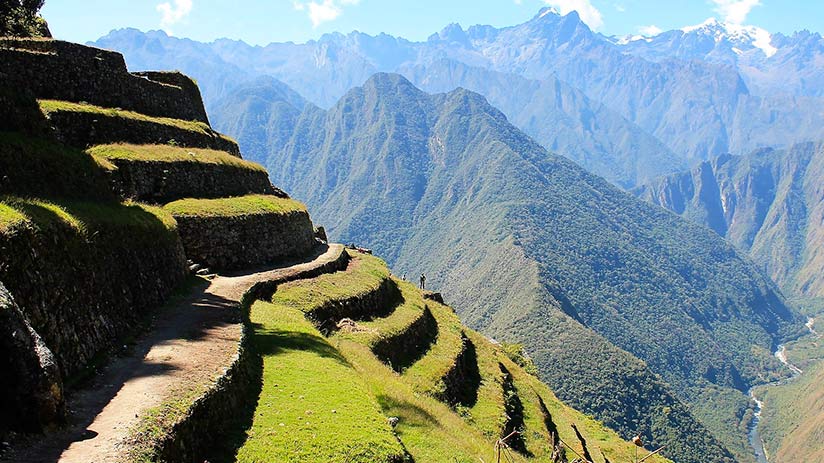If you are passionate about the Andean mountains, walking, trekking and climbing, and you want to live a challenging and unique adventure, Machu Picchu hike is definitely a must when visiting Peru!
Even if you are from those who arrived here because didn’t have luck getting the famous Inca Trail’s permits. As some people know, the Culture Ministry provides only 500 permits per day, going down rapidly. It should be noted that around 200 are for excursionists and 300 are for hiking staff (guides, porters, cooks, and others). Anyway, cheers up your mood again! You still have the opportunity for an unforgettable trip.
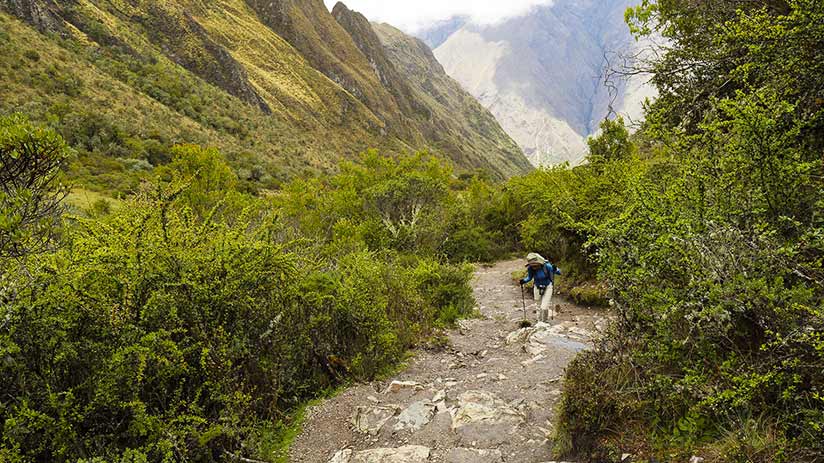
Let’s start with the following important notes:
- It’s strongly recommended to acclimatize acclimatize to the height, in this way travellers can avoid altitude sickness, travellers can stay 2-3 days in Cusco before beginning any trek.
- Alternative treks are available all year round.
- Note for any of these hikes, you and your group will travel accompanied by a guide, a cook and his support staff, horsemen, and mules that carry camping and cooking equipment + hikers’ belongings.
- Normally, most hikes consist of nights camping and the day prior to visit Machu Picchu, accommodation in Aguas Calientes. If you are from people who wish something private or luxurious, today it’s possible! There are lodges and glamorous campings with massages each night. Ask the experts, they will make your dream can true!
Below, all tempting alternative routes for your outstanding Machu Picchu hike:
1. The Salkantay Trail
- Difficulty level: moderate to challenging
- Common duration: 5 days / 4 nights
- High season: May – September (during the dry season in Cusco)
- Total distance: approximately 45 miles / 72 kilometers.
The Salkantay Trail isn’t a conventional route, but It has more exclusive views than the popular Inca Trail. It’s a thrilling trek that has it all!
The Salkantay trek to Machu Picchu usually begins in Mollepata Valley (3000m/9843ft) and you will pass around the skirts of the striking mountain peak of Salkantay (6271m/20569ft) which is surrounded by the awe-inspiring Vilcabamba mountain range.
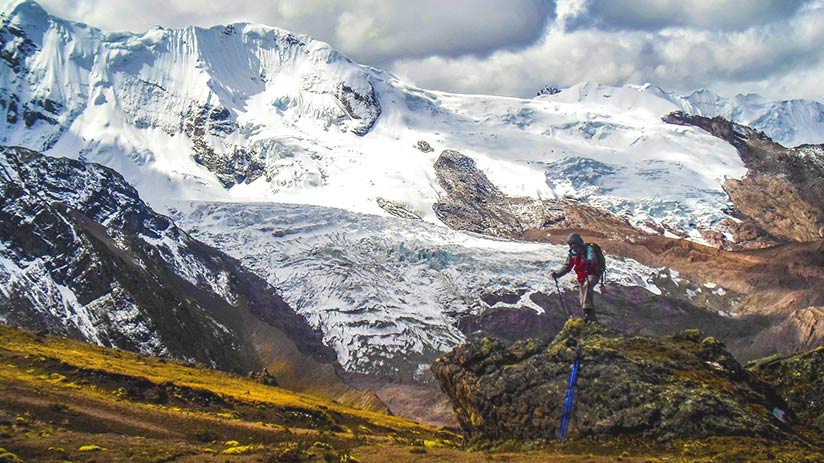
Along the way, trekkers go from the cold heights until the jungle landscape that makes a contrast with its diverse flora and fauna (for many people this is a fascinating experience).
Continuing with the hike, the trail leads trekkers down an ancient Inca road (part of the initial Qhapaq Ñan system which connected the far ends of the Empire) to the rediscovered Llactapata ruins (2650m/8694ft) where trekkers have a singular view of Machu Picchu.
Then, downhill takes trekkers to Hidroelectrica train station, where they have the option to take a train that runs along the Urubamba River to Aguas Calientes (1950m/6398ft) or to arrive there still walking (some travel agencies include a round trip Machu Picchu train tickets, don’t forget to review what’s included and not included in your tour or ask the experts).
The last day is magic, trekkers discover the mysteries of Machu Picchu.
2. The Lares Trek
- Difficulty level: moderate
- Common duration: 4 days / 3 nights
- High season: May – September (in the dry season that is the best time to go to Machu Picchu)
- Total distance: approximately 20.5 miles / 33 kilometers.
Lares Valley is located In the northern of the Sacred Valley of the Incas. It is a lovely and high point that offers an excellent opportunity for adventure hiking.
The Lares Trek encompasses all the reasons why you can consider yourself a hike-lover. This is a path that allows hikers to enjoy the stunning mountain scenery, intense emerald colored glacier lakes and queuña tree forests. If you’re lucky enough you can see pumas on the higher sides of the hills. Also, you are going to take a close look at traditional Peruvian villages and different ways of living.
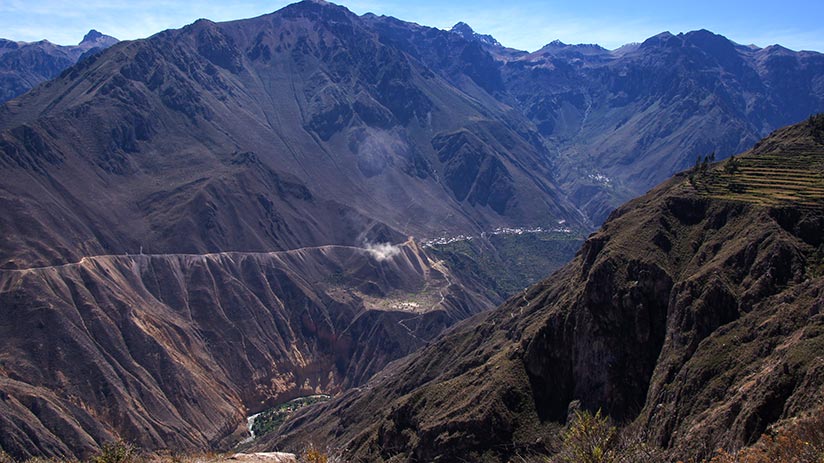
The Machu Picchu hike starts in the Sacred Valley of the Incas, in Cuncani/Quishuarani/Huaran or another village on the route. Once trekkers arrive, they are always surprised by the stone houses with thatched roofs surrounded by herds of llamas and alpacas. The local communities keep their traditional art, textiles and agriculture land use. These traditions add value to the trekking experience and travellers really enjoy seeing all!
On the trail, the panoramic views are incredible, trekkers will be delighted with snowy peaks like the Pitusiray (5750m/18865ft) and the Chicon (5500m / 18045ft), small waterfalls, the most wonderful lagoons like the Queuñaqocha Lagoon, as well as the most dazzling flora and fauna.
The trek ends in Lares town where trekkers can dip into hot springs and relax.
After the trekking, you are going to visit the marvelous Machu Picchu! So don’t forget it, while you walk or feel tired!
3. Inca Jungle Trail
- Difficulty level: challenging
- Common duration: 4 days / 3 nights or 3 days / 2 nights
- Season: May – September (during the dry season – the remaining months aren’t adequate for visiting Machu Picchu because of rains)
- Total distance: approximately 43 miles or 70 kilometers by bicycle / 28 miles or 45 kilometers walking
The Inca jungle trail was created for the most daring people because is full of adrenaline. It’s an excellent option that mixes extreme sports, being the most important cycling, with a magnificent hike.
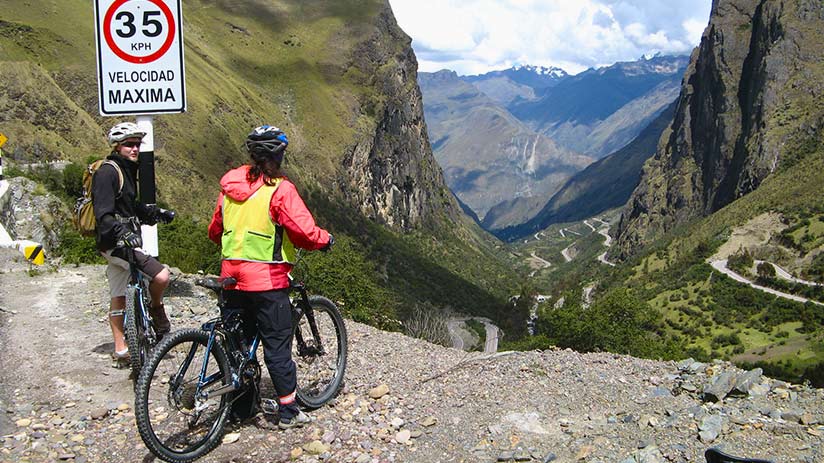
This vigorous Machu Picchu hike begins in the Abra Malaga pass at 4 350 meters above sea level. There, trekkers receive their mountain bikes and descend downhill in the midst of an impressive tropical forest arriving in Santa Maria (1430m/4691ft). Here, trekkers have the opportunity if desired to add more fun, taking the rafting activity in the Urubamba River. The next day, the trail follows walking into Santa Teresa (1850m/6069ft) passing through splendid mountains, jungle vegetation, and picturesque villages. In Santa Teresa, there is a zip line, so this day or the 3rd one (according to the itinerary), the riskiest trekkers can fly by spectacular scenery across the valley to Hidroelectrica train station and the other trekkers who aren’t interested in this activity continue walking. Upon arrival, all trekkers take the railway route, enjoying beautiful waterfalls, coca and coffee farms until getting in Aguas Calientes. During the 2 or 3 days of the adventure journey, the overnights usually are in hostels, no camping.
The last day: you are going to see the majestic Machu Picchu.
4. Choquequirao Trek
- Difficulty level: fairly challenging
- Common duration: 4 days / 3 nights without Machu Picchu & 8 days / 7 nights with Machu Picchu
- Season: May – September (the dry season – in year-round rarely crowded)
- Total distance: approximately 40 miles / 64 kilometers with Machu Picchu
The Choquequirao trek has a real explorer spirit…
Choquequirao meaning “Cradle of Gold” is a marvelous citadel of the last Inca kings according to the Peruvian history. Its striking structure is similar to Machu Picchu. This place was hidden to the public for many years, but nowadays it’s open to the tourists willing to discover it. Also, it’s considered within the world’s great lost cities.
Note: when booking this alternative trek, travel agencies give customers 2 options: only visiting Choquequirao or the long and worth Machu Picchu hike. In case you opt for the first one, ask the experts for more Machu Picchu information so you can see how added it to your trip itinerary.
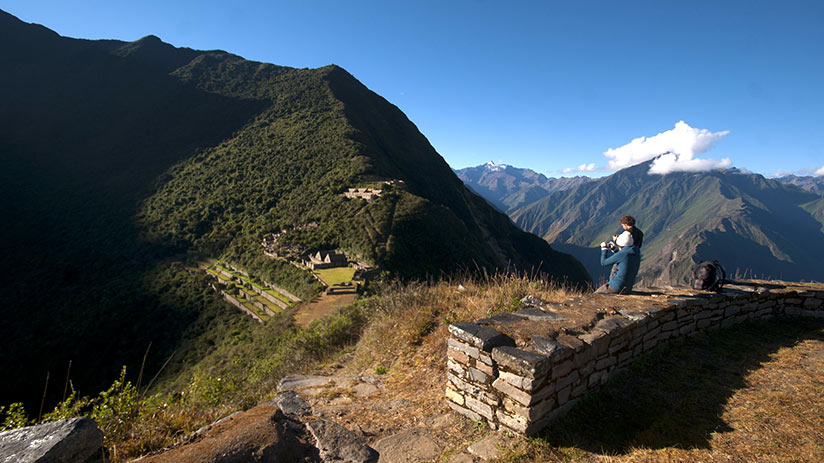
This trekking usually starts in the charming village of Cachora (2850m/9350ft). The trail is surrounded by beautiful mountains such as the enormous glacier Padreyoc (5571m/18278f) and Capuliyoc pass (2800m/9186ft). The walking continues crossing the Apurimac River canyon and descending to the first campsite at Chiquisca (1930m/6332ft). The next day is wonderful, the trail takes trekkers to the attractive archaeological complex of Choquequirao (3103m/10178ft) in order to set up the second campsite, during the sunset, travellers have have the chance to see condors flying around the Vilcabamba Range Mountains and Choquequirao itself… so, you just need to get comfy and keep your eyes wide open! On the third day, trekkers visit Choquequirao and their guide will explain them the history and ancient secrets of this place while exploring together the terraces and constructions of the site. The next days, the route continues through the diverse flora and fauna. If trekkers booked the long Machu Picchu hike, they follow the trail with more adventures. If trekkers do not want to take the long trail, they go back to Cusco by foot. They are going to have more fun on their way back, so it is not a boring return!
5. Huchuy Qosqo Trek
- Difficulty level: moderate
- Common duration: 3 days / 2 nights
- High Season: May – September (during the dry season)
- Total distance: approximately 11 miles / 18 kilometers
The Huchuy Qosqo trek is ideal for those who have limited time but desire a taste of hiking. The varied landscape and incredible views make this hike an exciting experience.
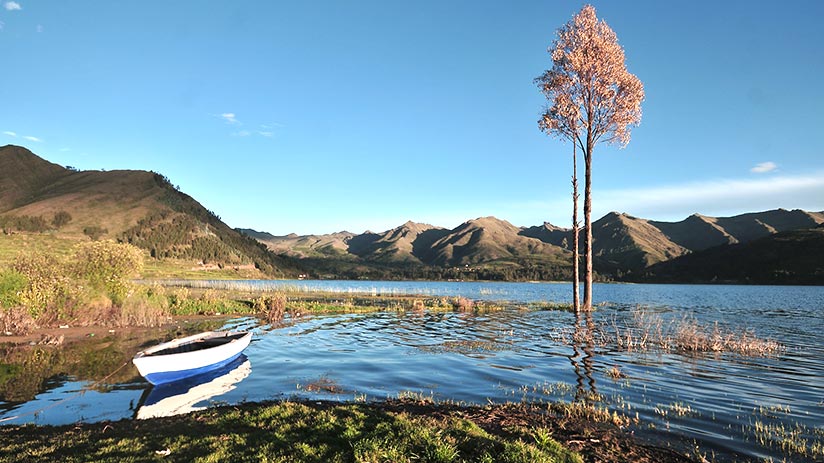
This Machu Picchu hike starts in Tauqaq village (3750m/12303ft) that sits on the edge of Piuray Lagoon. Along the way, trekkers pass sceneries of the typical Andean valleys with crops of corn, potatoes, barley, quinoa, and other tubers, and while ascending about 4050m/13287ft, the landscape changes dramatically to the classic high Andean savannah or Puna with scant vegetation, mainly of ichu. The views of the Vilcabamba mountain range peaks are spectacular with the presence of snow peaks such as Veronica, Pitusiray, and Chicon snow peaks. Following the trail, trekkers descent toward Huchuy Qosqo (3600m/11800ft). Huchuy Qosqo means “Little Cusco” and it is in front of the grandiose Vilcanota Mountain range. It comprises a ceremonial open center, the Kallanka (Great Wall), grain storage structures, and a long-lasting Inca-built irrigation channel which provides water to the site. Afterward, trekkers go downhill to Lamay (2900m/9514ft). Then, they are transferred to Ollantaytambo in order to take the train to Aguas Calientes. From they take the train to Aguas Calientes and this is the last day of an awesome adventure in Machu Picchu!
6. Ausangate Trek & Vinicunca (Rainbow) Mountain
- Difficulty level: challenging
- Common duration: 5 days / 4 nights
- Season: May – September (the dry season – all year long this trail is generally quiet)
- Total distance: approximately 28 miles / 46 kilometers
Ausangate is known as one of the most important sacred mountain peaks in Cusco. It is considered the bearer of a magical scenery for shamans’ initiation.
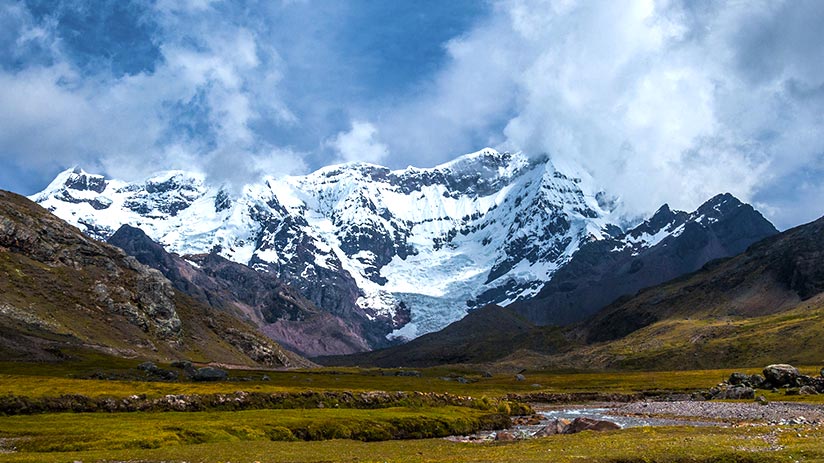
This hike has the highest-altitude in Peru that reaches about 5100m/ 16732ft, not recommended at all for faint-hearted people. For the audacious trekkers, this arduous hike invites them to easily synchronize with nature and harmoniously commune with the surroundings. The trail is quiet and uncrowded and takes to spectacular glacial lakes, as well as to see stunning snow-capped peaks and to come closer to the incredible red scree landscapes of the Vinicunca (Rainbow) Mountain, a beautiful paradise that is located in the Vilcanota mountain range. From there, the route continues returning to Cusco or as a Machu Picchu hike, ask the experts and assure of choosing the package you really like.
… Decide between all these attractive hikes and get the adventure of a lifetime.
